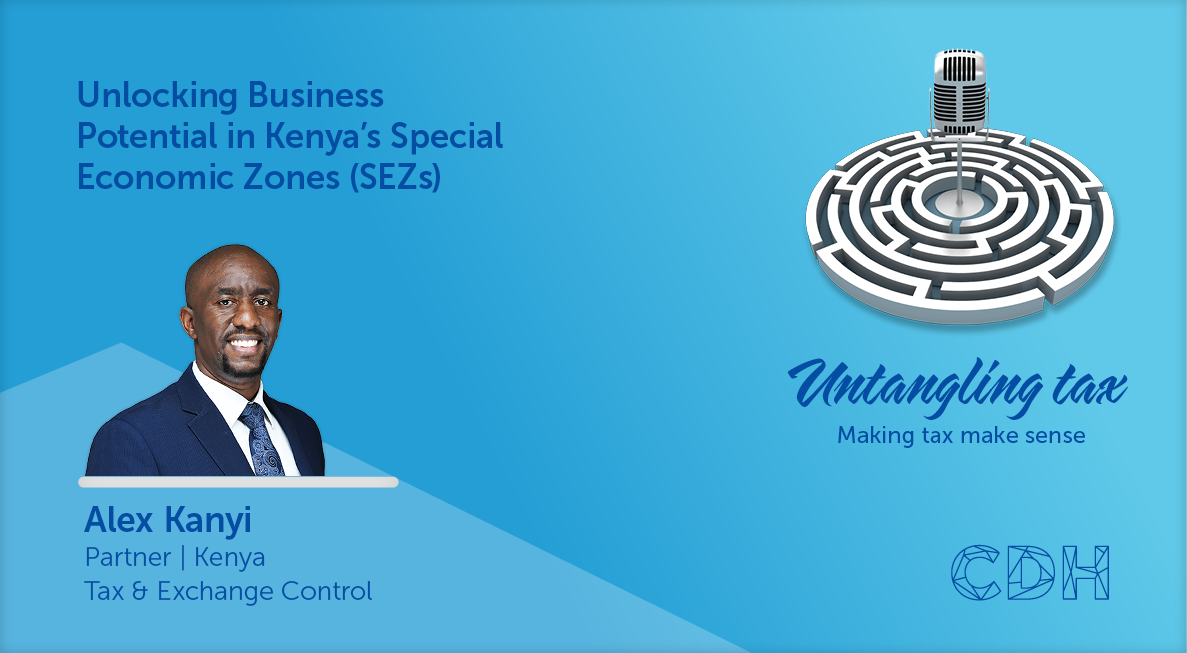Have mercy on the taxpayer! The write-off of tax debt in Australia and a South African perspective
Facts
The taxpayer was a sole proprietor who traded as a flooring installer and sub-contractor. Over the period 2010 to 2017, the taxpayer’s tax liabilities accumulated due to unpaid income taxes and unpaid goods and service taxes (GST), as well as the associated penalties and interest imposed due to his non-compliance with his tax obligations. Specifically, the Commissioner had imposed penalties for the taxpayer’s failure to lodge certain documents within the prescribed time periods.
In 2018, the taxpayer applied to the Commissioner for release from his tax liabilities. In the application, the following reasons were forwarded for the taxpayer’s failure to pay his taxes by the due date:
- The taxpayer was initially unaware of his GST remittance obligations as he had been employed prior to his sole proprietor endeavours and was therefore not familiar with the GST regime. When tax advice was subsequently sought, the taxpayer was incorrectly advised that he had no GST obligations as his contracting income was expected to be less than the threshold amount;
- The taxpayer suffered a back injury that prevented him from working for extended periods of time during the 2014 to 2017 financial years. He also incurred significant medical expenses pursuant to his recovery and recuperation;
- As a result of his back injury, the taxpayer developed a reliance on alcohol which further interfered with his ability to work. This reliance on alcohol also resulted in the taxpayer losing his driver’s licence as a result of a drunk driving conviction and this prevented the taxpayer from commuting to the various locations of his sub-contracting contracts; and
- The taxpayer’s relationship with his de facto partner broke down, causing the taxpayer to incur further expenses as a result of separate accommodation costs.
In the review application, it was contended on behalf of the taxpayer that the Commissioner had failed to take into account the taxpayer’s aforementioned personal circumstances in deciding whether or not to release him from
some of his tax liabilities.
The law
Section 340-5 of Schedule 1 to the Australian Tax Administration Act 1953 (AUSTAA) provides that the Commissioner may release a taxpayer, in whole or in part, from an eligible tax liability if certain requirements are met. The AUSTAA specifies that, in the case of an individual, the condition that must be met in order for the Commissioner to release a taxpayer is that the taxpayer will suffer serious hardship if required to satisfy the tax liability.
The Tribunal explained that release may only be granted in respect of eligible taxation liabilities. These taxation liabilities are set out in s340-10 of the AUSTAA and include income tax, general interest charges and certain administrative penalties. GST and penalties imposed for failure to lodge documents on time are ineligible for release.
The AUSTAA does not define “serious hardship”, however, in 2011, the Commissioner issued Practice Statement Law Administration 2011/17: Debt relief, waiver and write off (PSLA) which defined “serious hardship” as follows –
“‘Serious hardship’ is given its ordinary meaning. We consider serious hardship to exist where the payment of a tax liability would result in a person being left without the means to afford basics such as food, clothing, medical supplies, accommodation, or education. Tests are applied to determine whether serious hardship exists. The object of the tests is to determine whether the consequences of paying the tax would be so burdensome that the person would be deprived of what are considered necessities according to normal community standards.”
The three tests that are applied to determine the merits of a serious hardship application are –
- the income/outgoing test
- the asset/liabilities test, and
- other relevant factors.
Judgment
The Tribunal reiterated that the determination of whether the taxpayer should be released from his eligible tax liability involves a two-stage inquiry. The first stage requires the decision-maker to decide whether the settlement of the tax liability will result in serious hardship for the taxpayer. If this question is answered in the affirmative, it must be ascertained whether, in all the circumstances, it is just and proper to provide the requested relief to the taxpayer.
In considering the first stage of the inquiry, the Tribunal recognised that the specific circumstances of each case will dictate whether a taxpayer may suffer serious hardship if relief from his tax liabilities is not granted. It was found that serious hardship may be suffered even in those situations where a taxpayer would not be left destitute after payment of the pertinent tax liabilities and that an assessment of the individual taxpayer’s circumstances must be made with reference to normal community standards.
The Tribunal then applied each of the three tests to determine whether the taxpayer in the Burns matter would suffer serious hardship if release from his tax liabilities was not granted.
Income/outgoing test
The purpose of the income/outgoing test is to assess a taxpayer’s capacity to meet their tax liability from their current income, taking into account the number of dependants that a taxpayer has and the income of any other members of the household. Special consideration must also be given to the following factors:
- the taxpayer’s capacity to pay in a reasonable timeframe on the basis of their income and outgoings;
- scope for the taxpayer to increase their income;
- whether all expenditure could be considered reasonable and consideration of any discretionary components; and
- whether the taxpayer has made attempts to defer or reschedule other financial commitments.
In its judgment, the Tribunal found that the taxpayer in the Burns matter was not only able to afford his reasonable costs of living, including basic necessities such as food, clothing, medical supplies and accommodation, but would also able to service his tax debts with the surplus of his and his partner’s monthly income.
Assets/liabilities test
This test is used to assess a taxpayer’s ownership in, or access to, assets which may be indicative of the taxpayer’s ability to make payment of his tax liabilities. The Tribunal conceded that certain assets (that are of a modest nature) will be regarded as normal and reasonable possessions and that it could not be expected that such assets be surrendered by a taxpayer in order to pay a tax debt. Among these assets are –
- ownership of, or equity in, a residential property which is the taxpayer’s home;
- a motor vehicle;
- furniture and household goods;
- tools of trade;
- cash on hand or bank balances sufficient to meet immediate day-to-day living expenses; and
- funds put aside by aged persons to cover funeral expenses.
The Tribunal concluded that the Taxpayer’s debts greatly exceeded his available assets and therefore, the Taxpayer satisfied this test.
Other relevant factors
Lastly, the Tribunal took cognisance of the following factors which may justify a decision against granting release even when serious hardship may be suffered by a taxpayer:
- where a taxpayer appears to have unreasonably acquired assets ahead of meeting his tax liabilities;
- where a taxpayer appears to have disposed of funds or assets without giving consideration to his tax liability;
- where release would not result in reduction of hardship, such as where the person has other liabilities or creditors;
- where a taxpayer has paid other debts (either business or private), in preference to his tax debt;
- where the taxpayer, without good reason, has not pursued debts owed to him;
- where serious hardship is likely only to be short term;
- where the taxpayer has a poor compliance history;
- where the taxpayer is unable to show that he has planned for future debts;
- where the taxpayer has structured his affairs to place himself in a position of hardship (for example, placing all assets in trusts or related entities over which he has control); and
- where the taxpayer has delayed lodgment of returns resulting in the accumulation of a large debt that he
is unable to pay.
The Tribunal found that in the current matter, the taxpayer’s poor compliance history was a pertinent factor to be considered in determining whether release should be granted. The Tribunal stated that the taxpayer’s personal circumstances stemming from the back injury he sustained mitigated, but did not cancel out, his non-compliance in respect of the 2014 to 2017 financial years. Furthermore, this mitigating factor did not extend to the prior financial years during which the taxpayer was non-compliant with his tax obligations.
Ultimately, the Tribunal held that, although distressing, in the current matter, the taxpayer’s personal circumstances did not warrant release from his tax liabilities as he would not suffer serious hardship if he was required to satisfy the whole of his eligible tax debt.
Comparison with South African law
The Tribunal’s judgment provides a useful basis for comparing South Africa’s tax debt relief provisions with the tax debt relief provisions in Australia that are discussed in the judgment. Whereas the AUSTAA provides for a person to be released from so-called eligible tax liabilities if he can prove that he would suffer serious hardship if he was required to pay the whole of such eligible tax debt, the position is slightly different under South African law.
In terms of s197 of South Africa’s Tax Administration Act No 28 of 2011 (TAA), any portion of a person’s tax debt can be written off permanently only –
- to the extent that SARS is satisfied that the tax debt is irrecoverable at law, in terms of s198 of the TAA; or
- if the debt is compromised in terms of Part D of Chapter 14 of the TAA.
In terms of s198 of the TAA, a tax debt is irrecoverable at law if –
- it cannot be recovered by action and judgment of a court; or
- it is owed by a debtor that is in liquidation or sequestration and it represents the balance outstanding after notice is given by the liquidator or
- trustee that no further dividend is to be paid or a final dividend has been paid to the creditors of the estate; or
- it is owed by a debtor that is subject to a business rescue plan referred to in Part D of Chapter 6 of the Companies Act No 71 of 2008 (Companies Act), to the extent that it is not enforceable in terms of s154 of the Companies Act. (This only applies in the case of companies.)
Section 192 of the TAA defines a “debtor” as a taxpayer with a tax debt. One should note that a tax debt is not irrecoverable at law if SARS has not first explored action against or recovery from the assets of the persons who may be liable for the debt under Part D of Chapter 11 of the TAA.
Regarding the compromise of a tax debt, s200 of the TAA states that SARS will only authorise the compromise of a portion of a tax debt upon the request by a “debtor”, where that request complies with the requirements of s201 of the TAA, if the –
purpose of the compromise is to secure the highest net return from the recovery of the tax debt; and
compromise is consistent with considerations of good management of the tax system and administrative efficiency.
Section 201 lists three requirements that the debtor’s request for compromise must meet, which are the following:
- The debtor’s request must be signed by the debtor and supported by a detailed statement setting out eight specific things, including the current market value of the debtor’s assets and liabilities and the debtor’s reasons for seeking a compromise;
- The request must be accompanied by the evidence supporting the debtor’s claims for not being able to make payment of the full amount of the tax debt; and
- The debtor must warrant that the information provided in the application is accurate and complete.
Section 202 of the TAA states that in considering a request for the compromise of a tax debt, a senior SARS official must have regard to the extent that the compromise may result in –
- savings in the costs of collection;
- collection at an earlier date than would otherwise be the case without the compromise;
- collection of a greater amount than would otherwise have been recovered; or
- the abandonment by the debtor of some claim or right, which has a monetary value, arising under a tax Act, including existing or future tax benefits, such as carryovers of losses, deductions, credits and rebates.
Section 203 of the TAA also lists circumstances where it is not appropriate to compromise a tax debt and if any of these circumstances are present, SARS will not approve an application for the compromise of a tax debt. Even if a compromise application is granted by SARS and an agreement is signed by SARS and the taxpayer giving effect to the compromise, SARS will not be bound by the compromise if any of the circumstances in s205 of the TAA are present, including if it comes to light that the debtor failed to disclose a material fact to which the compromise relates.
Generally speaking, it can be quite difficult for South African taxpayers to successfully apply for the compromise of a tax debt, especially considering the stringent criteria that must be met. Where an application for the compromise of a tax debt is rejected, a taxpayer would be entitled to review SARS’ decision by instituting review proceedings in the High Court.
Where a compromise agreement is concluded, but SARS then argues that it is not bound by the compromise in terms of s205, such a decision can also be taken on review to the High Court. An example of this arose in the matter of Malema v Commissioner for the South African Revenue Service (76306/2015) [2016] ZAGPPHC 263 (29 April 2016), which we discussed in our Tax & Exchange Control Alert of 13 May 2016, where the applicant applied for a declaratory order that SARS was bound to the compromise agreement concluded.
To improve the prospects of a successful application, any taxpayer seeking to apply to SARS for a compromise of his tax debt, should always obtain professional tax advice when making such an application.
The information and material published on this website is provided for general purposes only and does not constitute legal advice. We make every effort to ensure that the content is updated regularly and to offer the most current and accurate information. Please consult one of our lawyers on any specific legal problem or matter. We accept no responsibility for any loss or damage, whether direct or consequential, which may arise from reliance on the information contained in these pages. Please refer to our full terms and conditions. Copyright © 2025 Cliffe Dekker Hofmeyr. All rights reserved. For permission to reproduce an article or publication, please contact us cliffedekkerhofmeyr@cdhlegal.com.
Subscribe
We support our clients’ strategic and operational needs by offering innovative, integrated and high quality thought leadership. To stay up to date on the latest legal developments that may potentially impact your business, subscribe to our alerts, seminar and webinar invitations.
Subscribe




